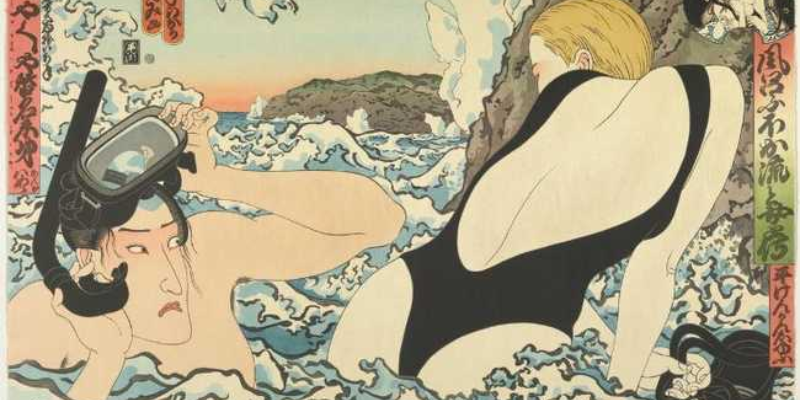I focus on how I can express my vision aesthetically and creating visual poetry. To create my work is living life and this gives me a surprise gift to myself.
– Masami Teraoka
The art of Masami Teraoka not only waters my parched radical brain filled with young blood and resistance but also fulfils my hunger for representation of the persistent issues in modern-day artworks. His works are a full-course meal that converses with the audience and provides a satisfying taste of aesthetics with an aroma of metaphors.
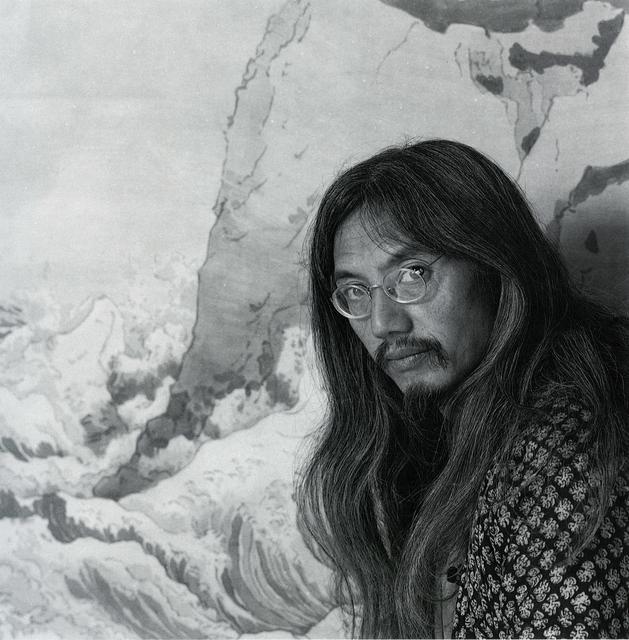
Born in 1936, Masami Teraoka is a Hiroshima-born, Japanese-American artist living in Hawaii who is majorly known for his Ukiyo-e-inspired woodblock paintings. Ukiyo-e is essentially a style of ancient Japanese paintings that depict the serenity of nature and temporary pleasures. Teraoka is known to combine this art style with modern American Political and economic issues. Hence, you will see his 17th century Edo-era-inspired paintings, indulging in ice-creams, hamburgers and condoms. On the surface, it might look comical and superficial to some, however, Teraoka’s artworks are overflowing with satire and political statements.
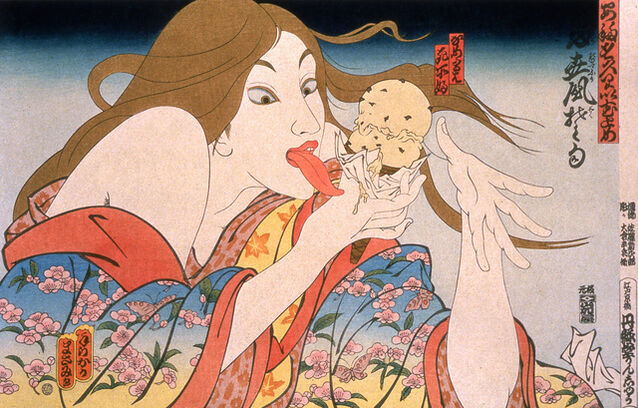
Masami Teraoka Artworks
One of his famous pieces, “McDonald’s Hamburgers Invading Japan” and “31 Flavours Invading Japan” critique not just the consumerism in America but also the growing influence of these American practices in Japan. His artworks are, therefore, radical and critique society, the faces in his paintings portray the epitome of raw greed and lust, which aptly represent the ongoing themes in his artworks.
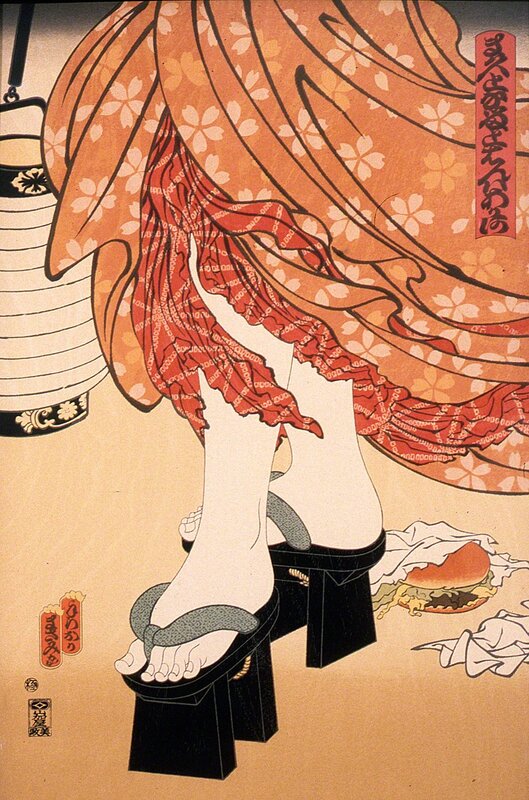
In his series of artworks dedicated to the AIDS epidemic, Teraoka leans even more into the darkness of humanity. He was inspired to do the series after his visit to Australia in the 80s wherein he noticed the sheer lack of education in terms of the disease, where the people including the doctors did not acknowledge the seriousness of the disease and kept shoe covers and hats as preventative measures. Teraoka in his painting “Woman and Fox”, depicts a woman tearing a string of condoms and a fox that is supposed to represent kitsune- a messenger, trying to warn the woman against it.
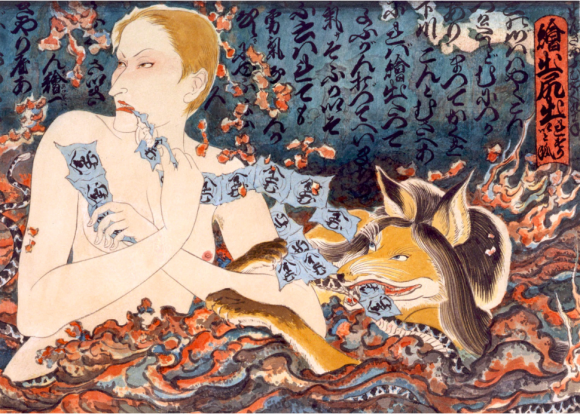
Since the 90s Teraoka has been indulging in Byzantine-Renaissance era-influenced art, one of the recent is his depiction of the Catholic church titled “Feast of Fools: the Triptych Paitings of Masami Teraoka”. These artworks are an outcome of the ill-treatment of the church towards the serious growing issues such as their history of child sexual abuse, clergy sex abuse towards women, and Pope Francis. The show also exhibited the feminist rock group Pussy Riot and their performance of ‘Punk Prayer’ in a Moscow church.

In an interview about the solo show, Teraoka says, “During the Renaissance, many narrative paintings were mounted as triptych paintings. The gold leaf frame to me is an over-the-top sort of frame setting. The gold leaf frame symbolically can also imply the wealth of religious institutions that frame their ethics and moral standards. Containing the content of narrative paintings in such a rigid format itself made sense in terms of the content I am exploring in my thematic series. The gold leaf can really be read as a symbol of the establishment, this over-the-top wealth, authoritative institutions, or the oppressor. I’m interested in addressing compelling, contemporary social issues, so the restricted gold leaf frame is a contrast to the current issues I am addressing within the triptych, mixing this ancient frame to bring out the thematic series that is confronting the Catholic clergy sexual issues.” Therefore, in his paintings, the artist uses the church’s own symbols against them in terms of depicting hellfire and snakes to depict the hypocrisy of the clergymen.

The artist has won several awards including the Lee Krasner Award in 2015 and his artworks are acquired and represented in major museums and galleries such as The Whitney Museum of Art, Tate Modern, Metropolitan Museum of Art, Arthur M. Sackler Gallery at the Smithsonian Institution, San Francisco Museum of Modern Art and many more. Therefore, through the depiction of pop culture, consumerism and other contemporary problems via an amalgamation with the ancient art styles and themes, the art of Masami Teraoka digs its claws deep into the growing socio-political issues and the viewers can’t help but fall into the trenches of his radicalist art with political aesthetics.
References:
- White Hot Magazine of Contemporary Art- Enticing Historic Aesthetic Vocabularies: An Interview with Masami Teraoka
- Wikipedia- Masami Teraoka
- Artsy- Masami Teraoka
- Chapman University- Masami Teraoka
- Contemporary Issues Through a Ukiyo-e Lens
- Untapped New York- SHOUTING AT THE VATICAN: MASAMI TERAOKA AT (ART) AMALGAMATED
- Catherine Clark Gallery- Masami Teraoka
Read Also:
Isamu Noguchi: An Abstract Sculptor Who Blended East and West
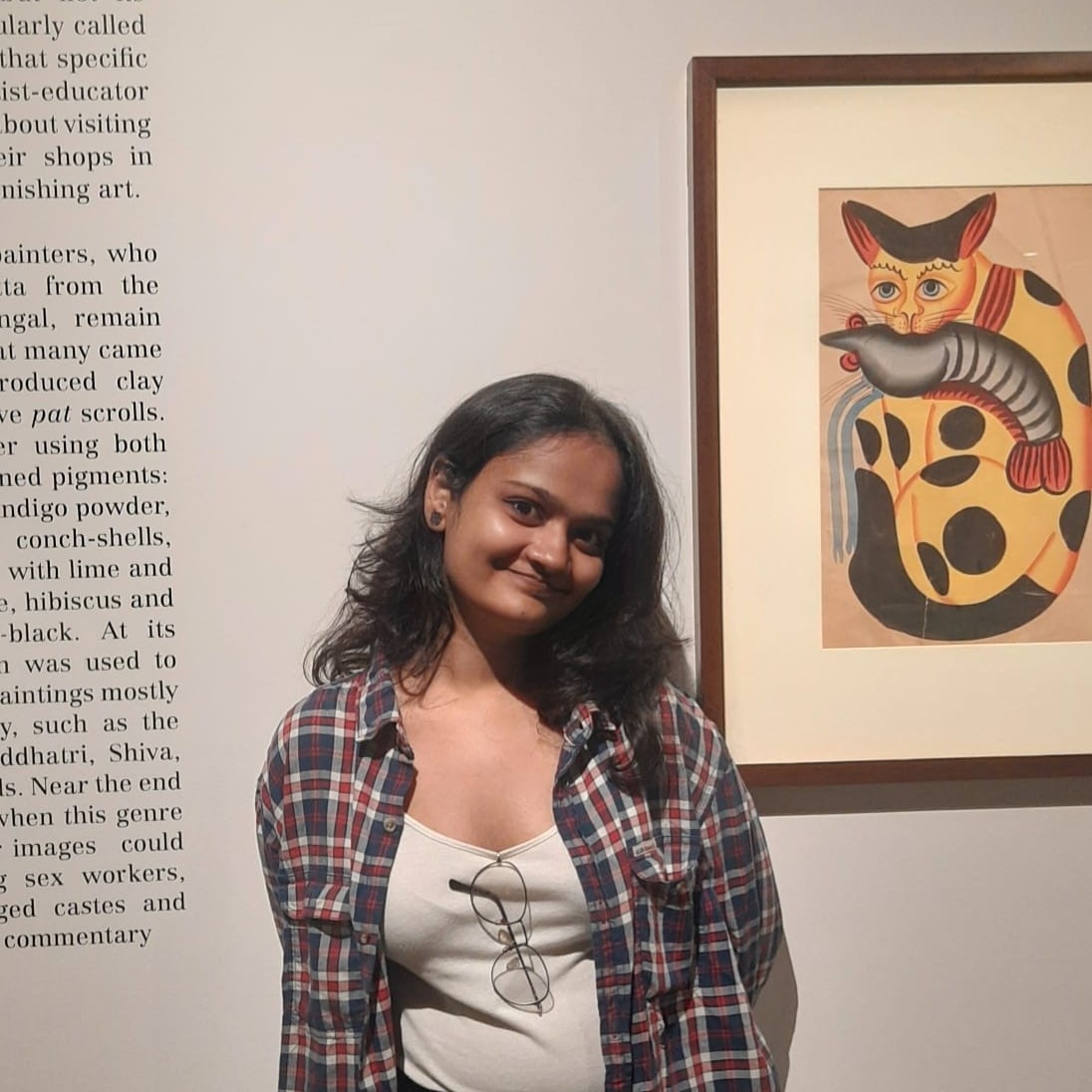
Vaishnavi Srivastava is a learning writer, a keen researcher and a literature enthusiast. She is a Sub-editor at Abir Pothi.

